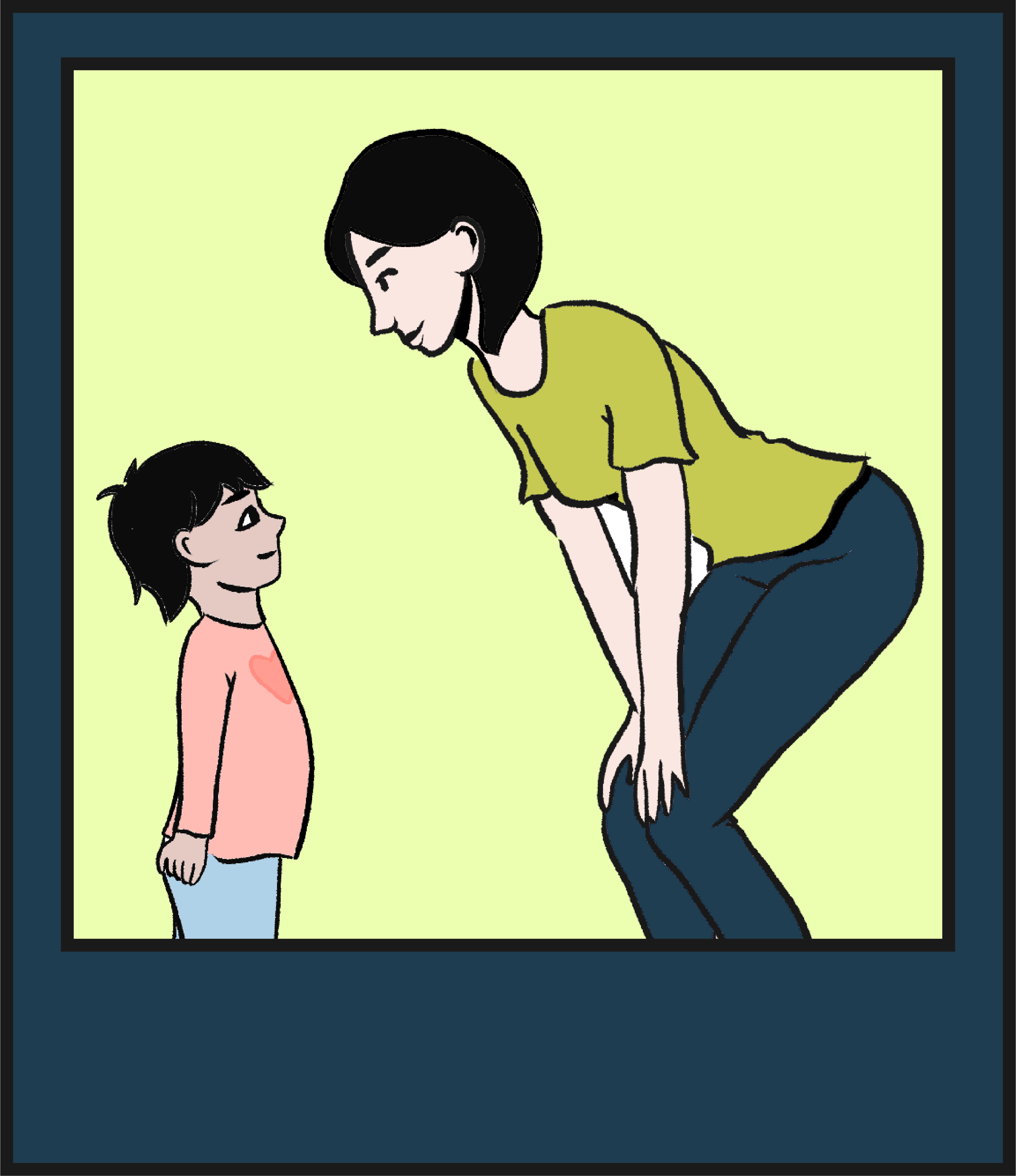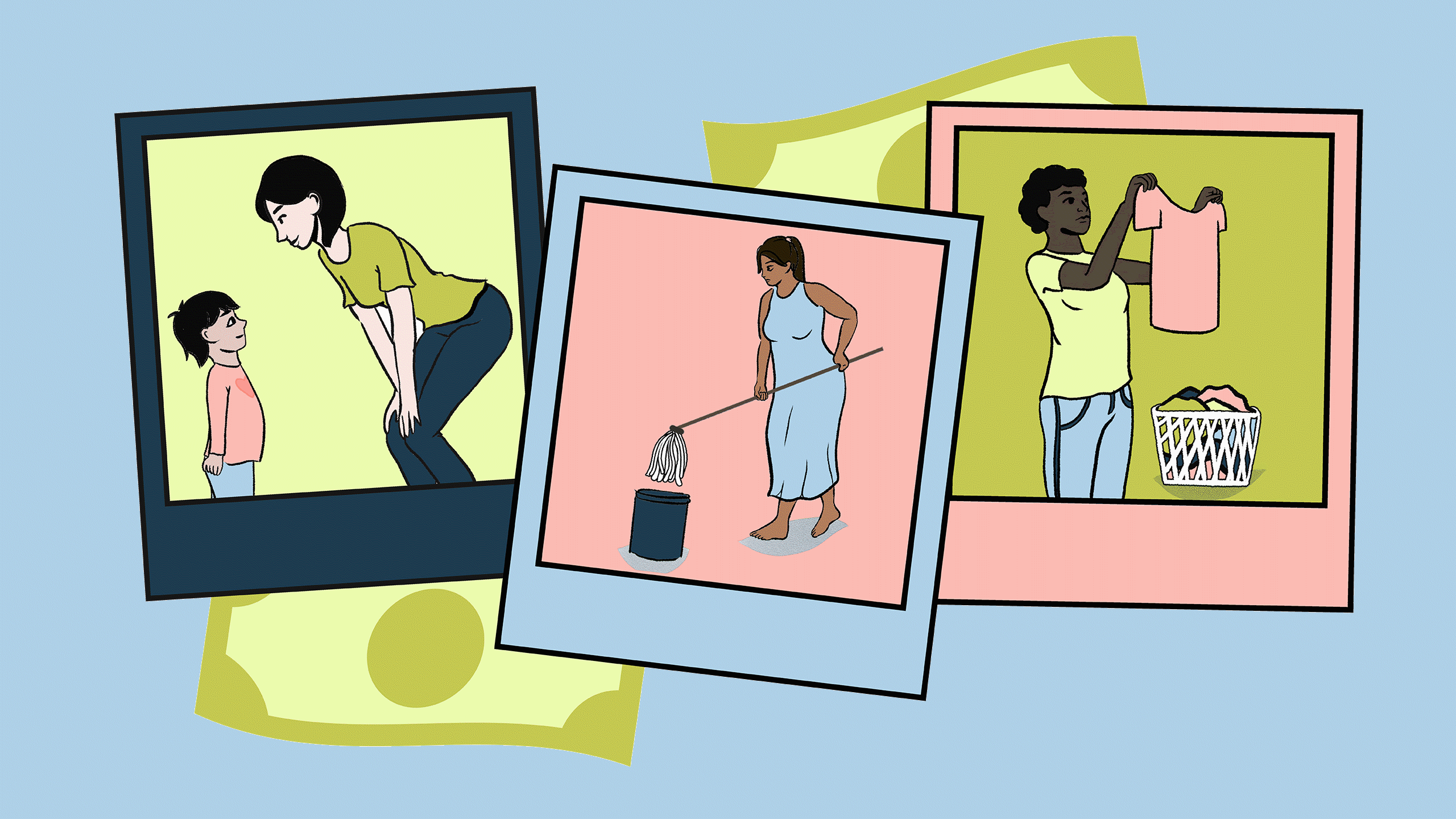The price is wrong on gendered work
The price is wrong on gendered work
Gendered labour maintains our lives, but isn’t valued by the society that governs it
Gendered labour maintains our lives, but isn’t valued by the society that governs it
Words by Kayla Zhu, Illustrations by Jes Mason
Words by Kayla Zhu, Illustrations by Jes Mason
W
hen Sarah Ahmad was pregnant in the fall of 2018, she used to drive an hour to school at York University after her morning shift as an educational assistant in Halton, Ont., and then drive an hour back home.
Between the long drives and pregnancy nausea, Ahmad, who is now a first-year occupational health and safety student at the Chang School, decided to take a break and wait until after she gave birth to continue her studies.
But it wasn’t that simple. When her child was four months old, Ahmad says she tried taking some courses at McMaster University but felt exhausted and overwhelmed from taking care of her newborn, studying and commuting.
Ahmad ended up taking a few years off from school and work to take care of her child. She said that while the break did help her reassess her career, she felt that she had “lost a lot of years.”
“It’s really challenging when as a woman, you’re trying to have a career as well and the work at home isn’t being shared,” says Ahmad.
From getting up at night to change diapers to constantly thinking about what she needs to get done when she goes home, Ahmad said she feels like she’s working 24/7 with a newborn.
“Even up until the point where I come from work, it’s just me until bedtime,” says Ahmad. “You’re constantly in this state of thinking, ‘What’s going to happen, how is it going to happen? How am I gonna manage?’ It’s never ending.”
Unpaid, gendered labour such as caregiving, homemaking and raising children are not measured in society through systems like gross domestic product. Without measurement, this type of work is often invisible in government policymaking.
According to Statistics Canada, in 2015, women in Canada on average spent 3.9 hours on unpaid work as a primary activity per day while men spent 2.4 hours. Women in Canada on average also spent 54 minutes more on housework as a primary activity per day than men. This totals to an average of 6.3 hours more housework each week.
Unpaid domestic labour can include housework, raising children and caring for a family member or friend.
A 2012 Statistics Canada chart shows that most caregivers in Canada are women, particularly those who care for people with long-term health conditions or disabilities. Caring for family members or friends reduces demands on health care and social service systems. In a 2009 Longwoods study, caregivers were estimated to have contributed the equivalent of around $25 billion in labour to the Canadian health system.
There are real-world implications of leaving this type of work invisible in governmental decision-making. For example, without gender-separated data or a gendered perspective in areas like public transportation, the design of these systems may not fit its users’ needs.
A 2012 Stanford study found that when they identified “care-related” trips as a new type of public transportation trips in Spain, it made up 25 per cent of all trip types, second to employment-related trips, which made up 30 per cent.
Care-related trips often involve “trip-chaining”—meaning making multiple stops—and represent a different travel pattern from the work commute patterns, which is often not reflected in the way city transit routes are planned.
Amanda Watson, a Simon Fraser University sociology and anthropology professor says that when women take on the burden of unpaid work, they can become dependent on male partners, potentially forcing them to stay in unsafe situations.
Watson says that the way women are “conditioned into these roles and ways of thinking about their survival” makes them feel like these home responsibilities are theirs alone to solve.
“I think that has a real kind of silencing effect on lobbying for structural or systemic change,” says Watson. “There’s kind of a sense of inevitability to the way society is organized.”
W
hen Sarah Ahmad was pregnant in the fall of 2018, she used to drive an hour to school at York University after her morning shift as an educational assistant in Halton, Ont., and then drive an hour back home.
Between the long drives and pregnancy nausea, Ahmad, who is now a first-year occupational health and safety student at the Chang School, decided to take a break and wait until after she gave birth to continue her studies.
But it wasn’t that simple. When her child was four months old, Ahmad says she tried taking some courses at McMaster University but felt exhausted and overwhelmed from taking care of her newborn, studying and commuting.
Ahmad ended up taking a few years off from school and work to take care of her child. She said that while the break did help her reassess her career, she felt that she had “lost a lot of years.”
“It’s really challenging when as a woman, you’re trying to have a career as well and the work at home isn’t being shared,” says Ahmad.
From getting up at night to change diapers to constantly thinking about what she needs to get done when she goes home, Ahmad said she feels like she’s working 24/7 with a newborn.
“Even up until the point where I come from work, it’s just me until bedtime,” says Ahmad. “You’re constantly in this state of thinking, ‘What’s going to happen, how is it going to happen? How am I gonna manage?’ It’s never ending.”
Unpaid, gendered labour such as caregiving, homemaking and raising children are not measured in society through systems like gross domestic product. Without measurement, this type of work is often invisible in government policymaking.
According to Statistics Canada, in 2015, women in Canada on average spent 3.9 hours on unpaid work as a primary activity per day while men spent 2.4 hours. Women in Canada on average also spent 54 minutes more on housework as a primary activity per day than men. This totals to an average of 6.3 hours more housework each week.
Unpaid domestic labour can include housework, raising children and caring for a family member or friend.
A 2012 Statistics Canada chart shows that most caregivers in Canada are women, particularly those who care for people with long-term health conditions or disabilities. Caring for family members or friends reduces demands on health care and social service systems. In a 2009 Longwoods study, caregivers were estimated to have contributed the equivalent of around $25 billion in labour to the Canadian health system.
There are real-world implications of leaving this type of work invisible in governmental decision-making. For example, without gender-separated data or a gendered perspective in areas like public transportation, the design of these systems may not fit its users’ needs.
A 2012 Stanford study found that when they identified “care-related” trips as a new type of public transportation trips in Spain, it made up 25 per cent of all trip types, second to employment-related trips, which made up 30 per cent.
Care-related trips often involve “trip-chaining”—meaning making multiple stops—and represent a different travel pattern from the work commute patterns, which is often not reflected in the way city transit routes are planned.
Amanda Watson, a Simon Fraser University sociology and anthropology professor says that when women take on the burden of unpaid work, they can become dependent on male partners, potentially forcing them to stay in unsafe situations.
Watson says that the way women are “conditioned into these roles and ways of thinking about their survival” makes them feel like these home responsibilities are theirs alone to solve.
“I think that has a real kind of silencing effect on lobbying for structural or systemic change,” says Watson. “There’s kind of a sense of inevitability to the way society is organized.”
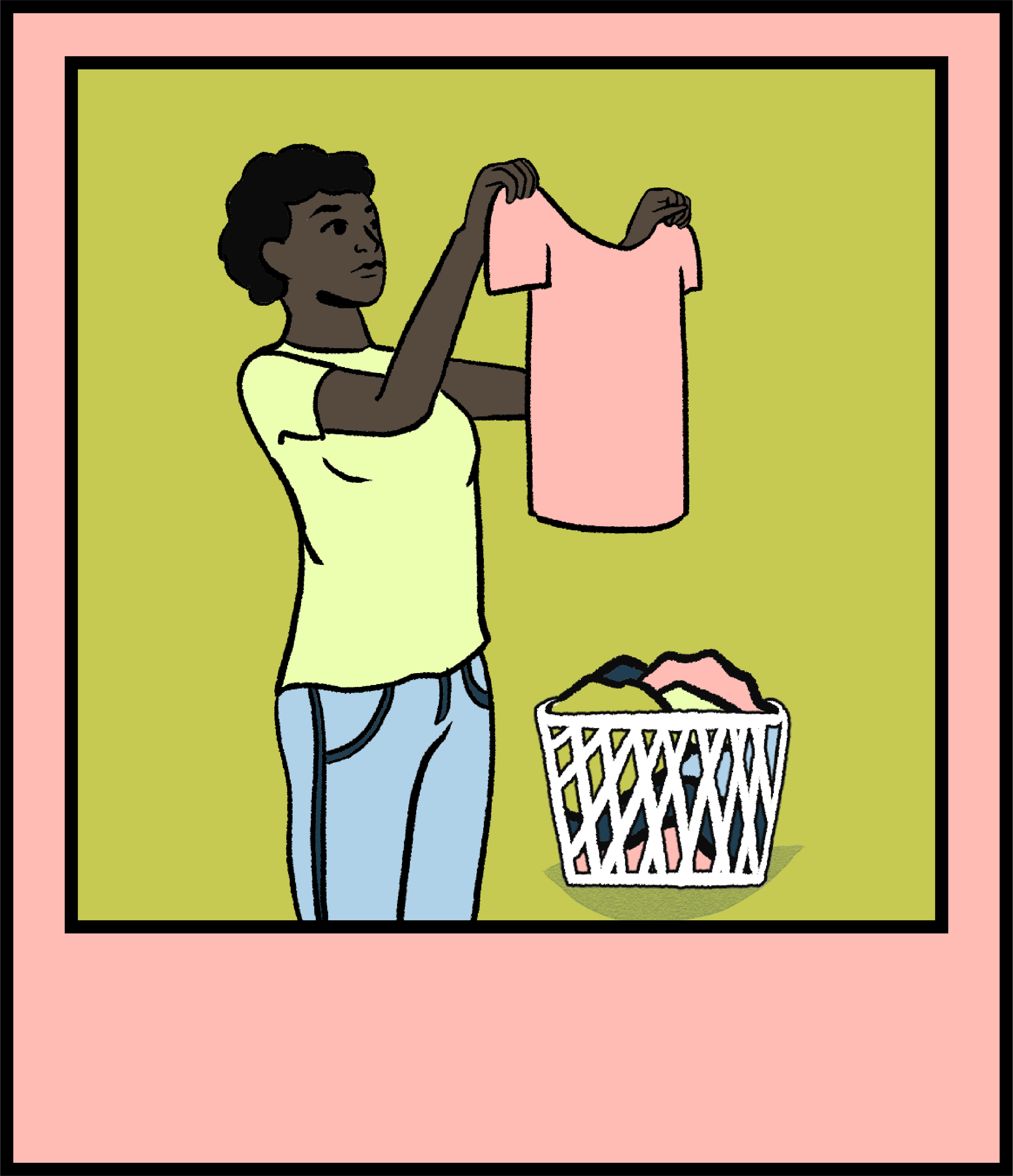
T
en years ago, Karin Hwang, Ryerson office and administrative studies alum, started her own life coaching business after moving on from the real estate industry.
In 2016, Hwang’s daughter was hit by a car when crossing the street and suffered serious brain injuries, and she had to stop working entirely.
Hwang became a full-time caregiver for her daughter for around three years and lived with PTSD after the incident. She said the accident was so shocking and “put her in a mental space that was so low” that she couldn’t continue with her coaching business.
“I couldn’t carry on with my career because my mindset wasn’t there, I could not focus on it any more,” says Hwang. “My priority was my daughter’s recovery.”
Hwang has restarted her business as of this September after participating in the University of Toronto Back to Work returnship program that supports women going back to work after an extended leave of absence.
“We did have the same experience, knowing what it’s like to have to take a career break and how tough it is to rebuild yourself, and having that understanding and compassion for each other,” says Hwang.
She believes that people often don’t view mothers as individuals with their own lives or careers, which negatively impacts mothers or caregivers looking to return to work.
“From my experience, those people who are involved in your life view your child as the number one priority, and then they tend to forget about you,” says Hwang. “There is not enough support or recognition to help build you back.”
Women taking on most of the burden of unpaid care work affects gender representation in the workforce as well as wage gaps.
According to Statistics Canada, in 2019, Canadian women on average made $26.02 an hour while men made $29.61, representing a gender wage gap of around 12 per cent.
T
en years ago, Karin Hwang, Ryerson office and administrative studies alum, started her own life coaching business after moving on from the real estate industry.
In 2016, Hwang’s daughter was hit by a car when crossing the street and suffered serious brain injuries, and she had to stop working entirely.
Hwang became a full-time caregiver for her daughter for around three years and lived with PTSD after the incident. She said the accident was so shocking and “put her in a mental space that was so low” that she couldn’t continue with her coaching business.
“I couldn’t carry on with my career because my mindset wasn’t there, I could not focus on it any more,” says Hwang. “My priority was my daughter’s recovery.”
Hwang has restarted her business as of this September after participating in the University of Toronto Back to Work returnship program that supports women going back to work after an extended leave of absence.
“We did have the same experience, knowing what it’s like to have to take a career break and how tough it is to rebuild yourself, and having that understanding and compassion for each other,” says Hwang.
She believes that people often don’t view mothers as individuals with their own lives or careers, which negatively impacts mothers or caregivers looking to return to work.
“From my experience, those people who are involved in your life view your child as the number one priority, and then they tend to forget about you,” says Hwang. “There is not enough support or recognition to help build you back.”
Women taking on most of the burden of unpaid care work affects gender representation in the workforce as well as wage gaps.
According to Statistics Canada, in 2019, Canadian women on average made $26.02 an hour while men made $29.61, representing a gender wage gap of around 12 per cent.

Watson says our society values mothers socially—through Mother’s Day, media and literature, but excludes and devalues maternal work and care work economically.
“There’s a tension between what we say, as a culture, about motherhood and care work and how we value it and how that work is actually represented in society,” says Watson.
Watson says that the definition of work was “reconfigured” during the early days of capitalist expansion when factory workers earned wages while women became “relegated” to housework to sustain the labour force.
“Gendered work or work around the house has—since that reconfiguration of work through capitalism and because it’s not waged—not been seen as work,” says Watson.
The socialization of housework and caretaking as feminine also makes it difficult to lift some of the burden off of women, according to Watson.
Citing Italian scholar Sylvia Federici’s 1974 book, Wages Against Housework, Watson explains that society associates unpaid domestic labor, caring for children and cooking and cleaning with “women’s natural abilities and desires.”
“That makes it really difficult to argue against when we hear rhetoric of ‘I choose to do this because it’s a labor of love,’” says Watson. “We’ve sort of slipped women’s work into what is innately female in a false kind of naturalization process.”
Watson says our society values mothers socially—through Mother’s Day, media and literature, but excludes and devalues maternal work and care work economically.
“There’s a tension between what we say, as a culture, about motherhood and care work and how we value it and how that work is actually represented in society,” says Watson.
Watson says that the definition of work was “reconfigured” during the early days of capitalist expansion when factory workers earned wages while women became “relegated” to housework to sustain the labour force.
“Gendered work or work around the house has—since that reconfiguration of work through capitalism and because it’s not waged—not been seen as work,” says Watson.
The socialization of housework and caretaking as feminine also makes it difficult to lift some of the burden off of women, according to Watson.
Citing Italian scholar Sylvia Federici’s 1974 book, Wages Against Housework, Watson explains that society associates unpaid domestic labor, caring for children and cooking and cleaning with “women’s natural abilities and desires.”
“That makes it really difficult to argue against when we hear rhetoric of ‘I choose to do this because it’s a labor of love,’” says Watson. “We’ve sort of slipped women’s work into what is innately female in a false kind of naturalization process.”
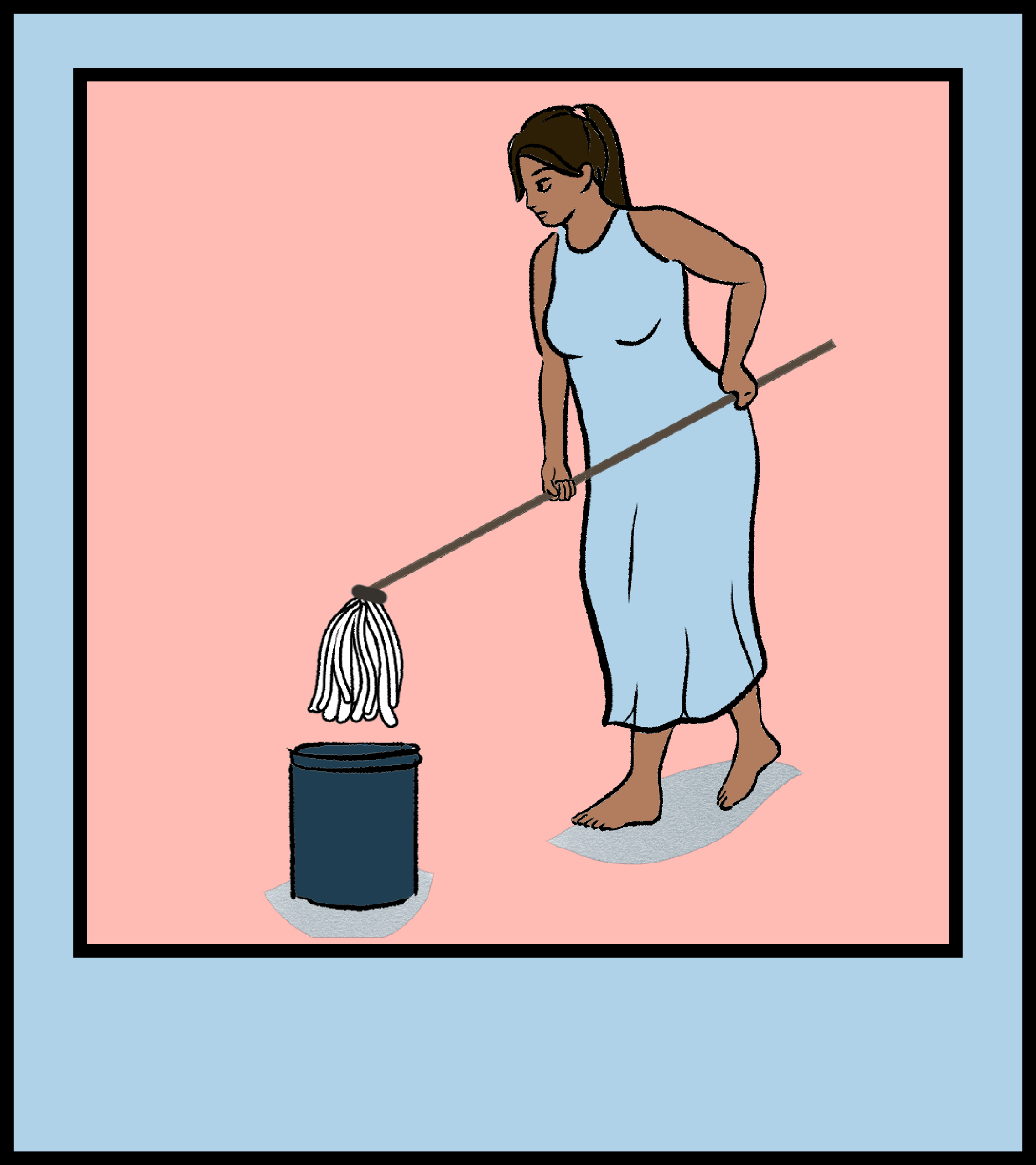
G
rowing up, Cassandra Earle, a third-year journalism student at Ryerson, says her mom used to take her and her brother to school every morning, pick them up every day and spend every morning and evening with them.
Her mother decided to go part-time with her income assistance officer job when her children were young so she could be at home more for them.
Earle says she didn’t realize until later in life how much of a sacrifice it was for her mother—who she says valued her career and was one of the only people in her family to go into higher education—to give up full-time work.
“Now looking at it, I deeply understand on a personal level, because I am someone who is getting an education, how difficult it must have been for my mom to put that aside for her kids even though she knew it was the right thing to do,” Earle says.
Without those sacrifices Earle says she wouldn’t be able to pursue university today. She says that raising children “is the most valuable type of work.”
“I’m a super empathetic person because of her. I’m a better journalist, person, student,” says Earle. “She’s taught me what’s important, she’s taught me strength on so many levels, on an emotional level, on a physical level and just how to be a good person.”
Jeanne Maurer, a Ryerson geography professor, says that women’s work has always been undervalued and underpaid.
“These kinds of skills and this kind of work, which is arguably the most important thing we can do, raising and taking care of children, is probably the most undervalued work we do,” says Maurer.
In light of COVID-19, both the social and economic inequalities of gendering domestic and care labour have become more evident.
One third of women in Canada considered leaving their jobs to take care of house work during the pandemic, compared to 20 per cent of men, according to a recent survey by The Prosperity Project.
Female-dominant workforces such as long-term care providers and early childhood education are also struggling the most to recover from the economic impact of the pandemic.
Both the Coalition of Child Care Advocates of B.C. and Newfoundland early childhood educators voiced concerns about unclear rollout plans and health risks when their provincial governments announced emergency child care programs for essential workers in March.
“Not only do you have a relatively underpaid and highly skilled workforce, but you also have them in incredibly precarious and dangerous situations in terms of COVID-19 infections,” says Maurer.
Maurer is a strong proponent of Genuine Progress Indicator (GPI) as a way to measure and make other types of work and skills visible in our policymaking.
GPI is a metric that takes into account the positive and negative results of economic growth to measure the wellbeing of a country. The metric could include indicators such as poverty levels, environmental wellbeing, access to healthcare and mental health statistics.
G
rowing up, Cassandra Earle, a third-year journalism student at Ryerson, says her mom used to take her and her brother to school every morning, pick them up every day and spend every morning and evening with them.
Her mother decided to go part-time with her income assistance officer job when her children were young so she could be at home more for them.
Earle says she didn’t realize until later in life how much of a sacrifice it was for her mother—who she says valued her career and was one of the only people in her family to go into higher education—to give up full-time work.
“Now looking at it, I deeply understand on a personal level, because I am someone who is getting an education, how difficult it must have been for my mom to put that aside for her kids even though she knew it was the right thing to do,” Earle says.
Without those sacrifices Earle says she wouldn’t be able to pursue university today. She says that raising children “is the most valuable type of work.”
“I’m a super empathetic person because of her. I’m a better journalist, person, student,” says Earle. “She’s taught me what’s important, she’s taught me strength on so many levels, on an emotional level, on a physical level and just how to be a good person.”
Jeanne Maurer, a Ryerson geography professor, says that women’s work has always been undervalued and underpaid.
“These kinds of skills and this kind of work, which is arguably the most important thing we can do, raising and taking care of children, is probably the most undervalued work we do,” says Maurer.
In light of COVID-19, both the social and economic inequalities of gendering domestic and care labour have become more evident.
One third of women in Canada considered leaving their jobs to take care of house work during the pandemic, compared to 20 per cent of men, according to a recent survey by The Prosperity Project.
Female-dominant workforces such as long-term care providers and early childhood education are also struggling the most to recover from the economic impact of the pandemic.
Both the Coalition of Child Care Advocates of B.C. and Newfoundland early childhood educators voiced concerns about unclear rollout plans and health risks when their provincial governments announced emergency child care programs for essential workers in March.
“Not only do you have a relatively underpaid and highly skilled workforce, but you also have them in incredibly precarious and dangerous situations in terms of COVID-19 infections,” says Maurer.
Maurer is a strong proponent of Genuine Progress Indicator (GPI) as a way to measure and make other types of work and skills visible in our policymaking.
GPI is a metric that takes into account the positive and negative results of economic growth to measure the wellbeing of a country. The metric could include indicators such as poverty levels, environmental wellbeing, access to healthcare and mental health statistics.
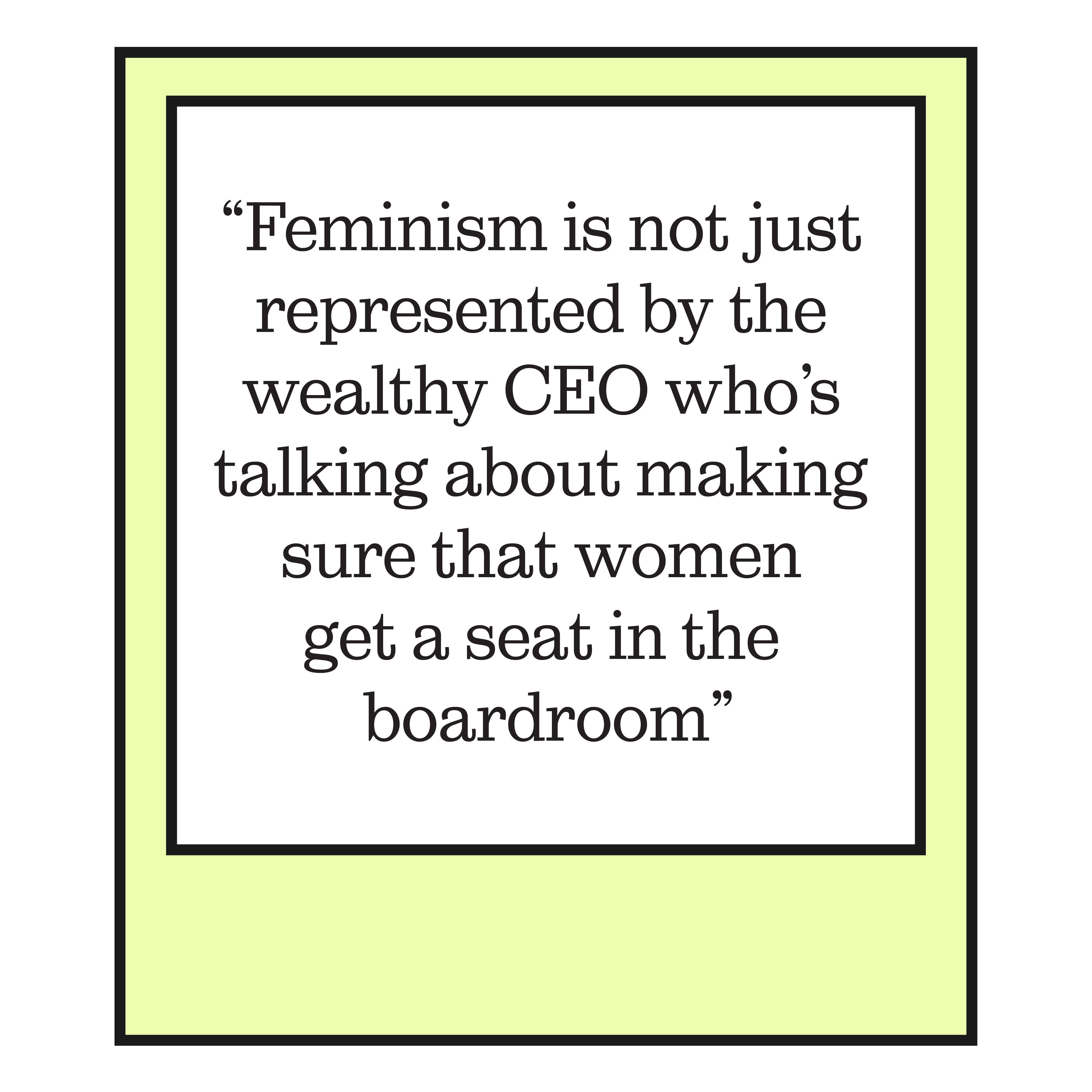
“Our spending and consumption are all measured in terms of positive and negative outcomes, which of course would mean jobs and economic growth but also might mean environment degradation and gender disparity,” says Maurer.
Watson believes that universal childcare and universal basic income are some government policies that could lift some of the burden of care off of women.
“Universal child care levels the playing field for women,” says Watson. “They don’t have to make certain decisions around the paid labor that they do based on the affordability or unaffordability of childcare.”
Prime Minister Justin Trudeau said in his throne speech on Sept. 24 that low-income women have been hit hardest by COVID-19 in a crisis that has been described as a “She-cession,” a term coined by economists Trish Hennessy and Armine Yalnizyan.
He announced an Action Plan for Women in the Economy that will help women re-enter the workforce and “ensure a feminist, intersectional response to this pandemic and recovery” as well as plans to create a national early learning and childcare system.
Trudeau also said that the federal government is committed to subsidizing before and after program costs to ensure flexible care options for families.
“Our spending and consumption are all measured in terms of positive and negative outcomes, which of course would mean jobs and economic growth but also might mean environment degradation and gender disparity,” says Maurer.
Watson believes that universal childcare and universal basic income are some government policies that could lift some of the burden of care off of women.
“Universal child care levels the playing field for women,” says Watson. “They don’t have to make certain decisions around the paid labor that they do based on the affordability or unaffordability of childcare.”
Prime Minister Justin Trudeau said in his throne speech on Sept. 24 that low-income women have been hit hardest by COVID-19 in a crisis that has been described as a “She-cession,” a term coined by economists Trish Hennessy and Armine Yalnizyan.
He announced an Action Plan for Women in the Economy that will help women re-enter the workforce and “ensure a feminist, intersectional response to this pandemic and recovery” as well as plans to create a national early learning and childcare system.
Trudeau also said that the federal government is committed to subsidizing before and after program costs to ensure flexible care options for families.
